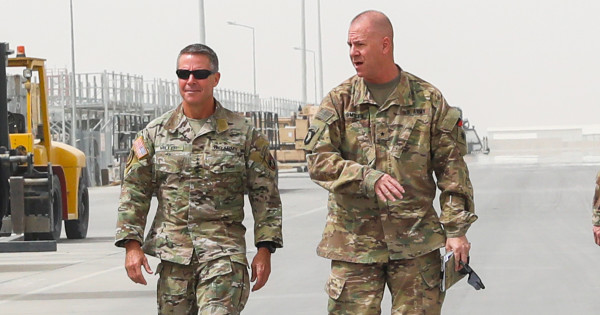

U.S. Army Brig. Gen. Jeffrey Smiley was wounded during a recent insider attack in Afghanistan’s Kandahar Province, a spokesman for the NATO Resolute Support mission told Task & Purpose on Sunday.
“I can confirm that he is recovering from a gunshot wound,” Navy Lt. Cmdr. Grant Neeley said.
Smiley, the commander of Train, Advise, Assist and Command – South, was hit by gunfire during an attack earlier this week reportedly carried out by the Kandahar governor’s bodyguard, who killed the Kandahar police chief, intelligence chief, and wounded the governor.
He is being treated at a military hospital in Kandahar, and for the time being, remains the TAAC-South commander, Neeley said. If he were to be evacuated for follow-on care at the U.S. military base in Landstuhl, Germany, his deputy Col. David Zinn would likely take his place (Neeley declined to comment on whether Smiley would be able to return to duty).
The New York Times’ Taimor Shah and Mujib Mashal first broke the story on Oct. 19 of a brigadier general being wounded in the attack; Dan Lamothe of The Washington Post and Task & Purpose on Sunday confirmed it was Smiley.
The Taliban claimed responsibility for Thursday’s attack, which it said targeted top American commander Gen. Austin “Scott” Miller, who was also present at the meeting (Miller was not injured by the gunman).
Smiley has served more than 30 years in the military, first joining as an enlisted Marine in 1983, according to an official biography.
He transitioned to the Army National Guard in 1987 and has taken on a variety of leadership roles since. He was promoted to brigadier general in May 2017 and took on his current command in August.
In addition to Smiley, two NATO contractors were also wounded in the shooting.
A general officer becoming a casualty has been exceptionally rare in Afghanistan. In 2011, German Army Gen. Markus Kneip was wounded in a suicide attack in Taloqan, and in 2014, U.S. Army Gen. Harold Greene was killed by an insider attacker in Kabul, making him the highest-ranking casualty of the Afghan War.
